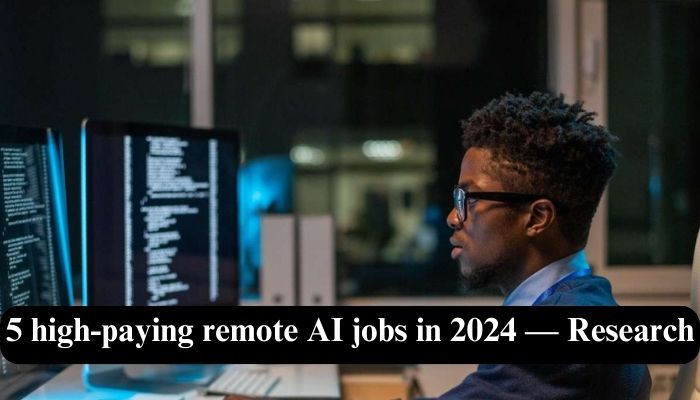5 high-paying remote AI jobs in 2024 — Research
High-paying AI jobs will continue to grow in 2024, offering remote work opportunities essential to advancing AI technologies across industries. Despite AI potentially displacing 85 million jobs, it is projected to create 97 million new roles by 2025, according to the World Economic Forum (WEF).
The WEF highlights declining roles such as data entry clerks, administrative staff, factory workers, and customer service employees, while digital marketing, software development, and data science jobs are rising in demand.
The WEF listed 10 growing roles, including data analysts, AI specialists, big data specialists, digital marketing experts, process automation specialists, business development professionals, digital transformation specialists, information security analysts, software developers, and IoT specialists.
Read also: 5 highest paying bachelor’s degrees to pursue in 2024 — Research
Similarly, FlexJobs identified five in-demand AI jobs, including data scientists, that are now increasingly common and often remote, with salaries starting at $100,000 annually.
According to a list by Forbes, here are the top 5 high-paying remote AI jobs in 2024 — Research
Remote AI research scientist — Average salary range: $160,029 to $195,130
AI research scientists develop and advance artificial intelligence models, prototypes, and technologies by creating new algorithms and improving existing ones to solve complex problems. This role requires expertise in applied mathematics, machine learning, deep learning, computational statistics, computer perception, and natural language processing (NLP).
These scientists conduct experiments, publish papers, and collaborate with cross-disciplinary teams to drive innovation in areas such as robotics, autonomous systems, and AI-powered applications.
Remote artificial intelligence (AI) engineer — Average salary range: $102,311 to $137,828
AI engineers develop and train the algorithms that power AI applications, creating systems that automate tasks and improve efficiency for businesses and individuals. They use skills in software development, data science, programming, and machine learning to build AI solutions for industries like finance, healthcare, and technology.
AI engineers work with data scientists and software developers to deploy AI models into production, ensuring the systems function correctly in real-world applications.
Read also: 25 jobs on the brink of machine takeover
Remote machine learning (ML) engineer — Average salary range: $96,820 to $115,581
Machine learning engineers build and maintain ML models, using large datasets to solve business challenges and improve machine learning processes. This role requires programming experience in Python, Java, and SQL, along with knowledge of machine learning, deep learning, statistics, and mathematics.
ML engineers optimize the performance of machine learning systems by fine-tuning models to deliver accurate predictions for applications like recommendation engines, fraud detection, and predictive analytics.
Remote natural language processing (NLP) scientist — Average salary range: $113,519 to $144,263
NLP scientists enable machines to understand and interpret human language by creating models that allow AI systems to process written and spoken language. Key skills include computational linguistics, semantic extraction, data modelling, and programming languages.
NLP scientists collaborate with AI researchers and engineers to create systems for applications such as voice assistants, chatbots, language translation, and text generation.
Read also: Here are 15 high-paying jobs in the United States – Research
Remote data scientist — Average salary range: $108,942 to $133,690
Data scientists analyze large datasets and apply statistical methods to build predictive models that support AI development and business decision-making. This role requires expertise in data analysis, programming, and statistical tools.
Data scientists work closely with machine learning engineers to create models that predict trends, identify patterns, and improve AI systems, enabling organizations to deploy AI solutions in various industries.








